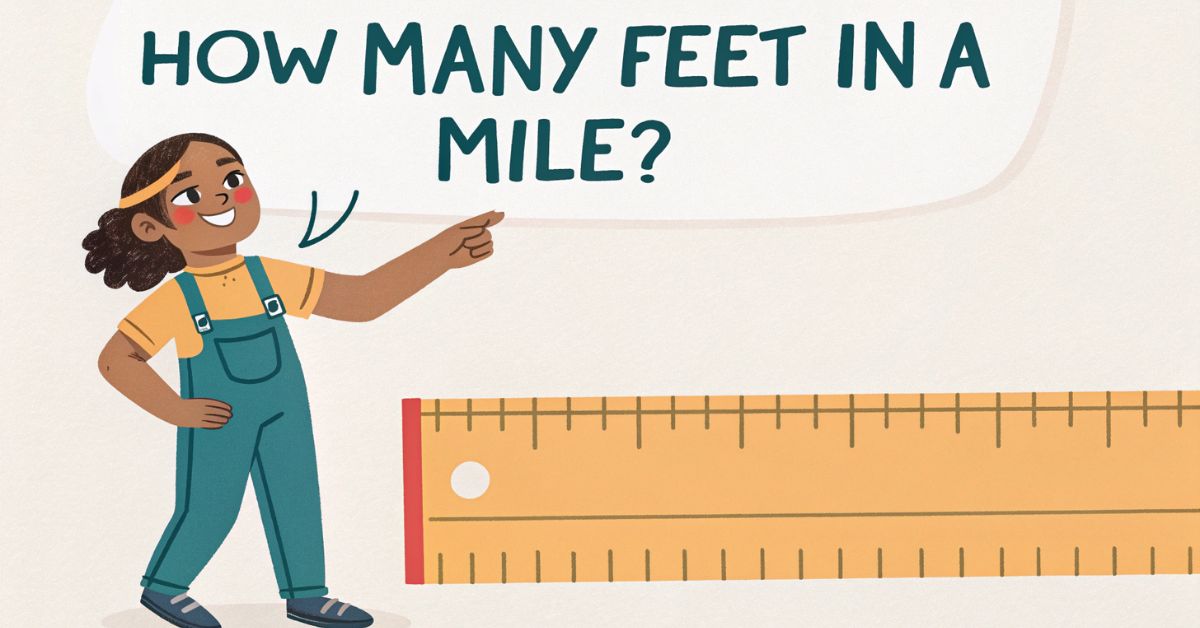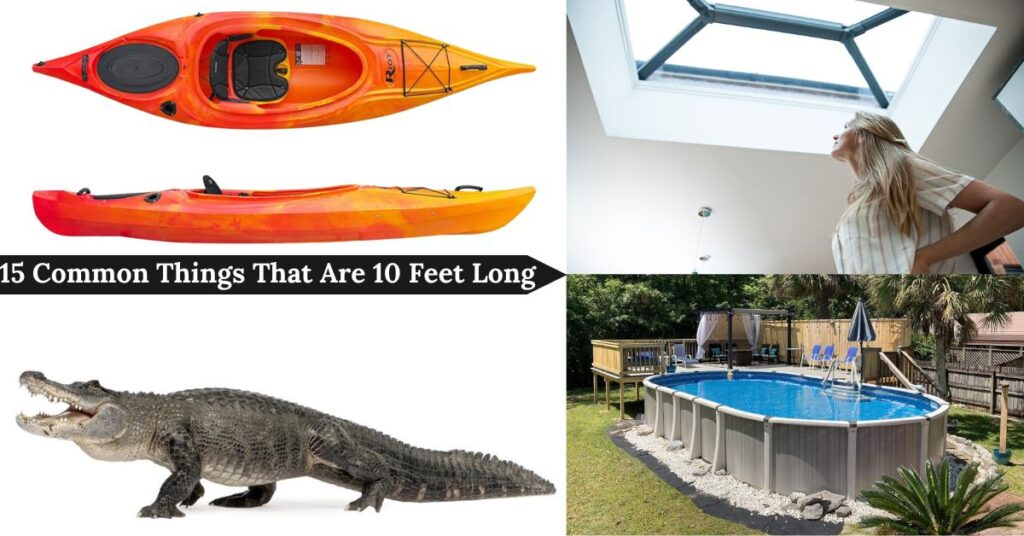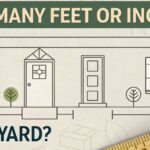Picture yourself standing at your front door, wondering exactly how far that mile-long jog actually stretches.
Whether you’re planning a workout route, measuring property boundaries, or simply satisfying your curiosity, understanding distance conversions is surprisingly practical.
This comprehensive guide delivers the precise measurements you need, plus the context to remember them forever.
🔧 Distance Measurement Conversion Tool
Mile to Distance Units
📏 Quick Distance Conversions
| Distance | Feet |
|---|---|
| 1 Mile | 5,280 |
| 1/2 Mile | 2,640 |
| 1/4 Mile | 1,320 |
| 1 Yard | 3 |
| 1 Meter | 3.28 |
🏠 Area Measurements
| Unit | Square Feet |
|---|---|
| 1 Acre | 43,560 |
| 1 Square Yard | 9 |
| 1 Square Meter | 10.76 |
📐 Height Conversion Calculator
👟 Walking Steps to Distance
Definitive Answer
🏃♂️ How Many Feet in a Mile?
📏 Understanding Related Distance Measurements
How Many Feet in a Yard?
How Many Feet in a Meter?
🏠 Area Calculations Made Simple
How Many Square Feet in an Acre?
How to Calculate Square Feet
LENGTH
SQ FT
👤 Human Height Conversions
5 Feet = ? Inches
6 Feet = ? Inches
Height Comparison Visual
(60 in)
(72 in)
(84 in)
🧠 Memory Tricks for 5,280 Feet
“Five Tomatoes” Memory Trick
Historical Origin
MILE
(Mille Passus)
MILE
(8 × 660 = 5,280)
MILE
(1593)
Walking Steps in a Mile
🏗️ Professional Applications
Construction
Aviation
(1.5-2.3 miles)
Surveying
Fitness
4 laps = 1 mile
📊 Quick Reference Comparison Chart
Distance Measurement Ladder
🎯 Test Your Knowledge
🎉 Congratulations! You’ve Mastered Distance Conversions
5,280 feet equals exactly one mile. This isn’t some arbitrary number pulled from thin air—it’s a carefully standardized measurement that’s been refined over centuries.
To put this in perspective, imagine 17.6 football fields lined up end-to-end. That’s your mile right there. Or picture 264 average-sized city blocks stretching into the distance.
Here’s your quick reference:
- 1 mile = 5,280 feet
- 1 mile = 1,760 yards
- 1 mile = 63,360 inches
Most people can walk this distance in roughly 15-20 minutes at a comfortable pace. Runners typically cover it in 6-10 minutes, depending on their fitness level.
Distance Measurements
Feet in a Yard
3 feet make up one yard. This conversion appears constantly in everyday situations—from ordering carpet to measuring garden spaces.
Think of a yard as roughly the distance from your nose to your fingertips when you stretch your arm out sideways. It’s also approximately the length of a baseball bat or guitar.
Contractors use this measurement extensively. When planning deck construction, they’ll often work in yards for material calculations, then convert to feet for precise cutting measurements.
Feet in a Meter
3.28084 feet equal one meter, though most people round this to 3.3 feet for quick calculations.
The meter slightly exceeds a yard—about 3.4 inches longer to be exact. This difference becomes significant in international construction projects or scientific measurements.
European visitors often struggle with American measurements. A helpful trick: 100 meters roughly equals 328 feet, or about 1/16 of a mile.
How Many Square Feet in an Acre?
43,560 square feet comprise one acre. This measurement proves crucial for anyone dealing with property, whether buying land or planning agricultural projects.
Visualize an acre as roughly 75% the size of a football field. It’s also equivalent to a square plot measuring 208.7 feet on each side.
Real estate agents rely on this conversion constantly. A typical suburban home sits on about 1/4 to 1/2 acre, which translates to 10,000-20,000 square feet of total lot space.
Calculate Square Feet for Any Space
Square footage calculations follow a simple formula: length × width = square feet.
For rectangular rooms, measure both dimensions in feet and multiply. A 12-foot by 15-foot bedroom contains 180 square feet.
Irregular spaces require breaking the area into rectangles. Calculate each section separately, then add the totals together. Always measure in the same units to avoid confusion.
Human Height
Inches is 5 Feet
60 inches equal 5 feet exactly. This height serves as a common reference point for many everyday measurements.
Most kitchen countertops sit at 36 inches (3 feet), making them comfortable for someone around 5’6″ tall. Doorknobs typically mount at 36-40 inches from the floor.
Medical professionals use this conversion frequently. Blood pressure cuffs, examination tables, and mobility equipment all reference these measurements for proper sizing.
Inches is 6 Feet
72 inches make up 6 feet. This height often determines design considerations in homes and public spaces.
Standard doorways measure 80 inches (6’8″) tall, providing comfortable clearance for most people. Ceiling fans typically hang 84-96 inches from the floor to accommodate taller individuals safely.
Basketball players averaging 6 feet find themselves at the shorter end of professional athletics, where 7-foot players (84 inches) dominate the court.
Mile-to-Feet
Fitness enthusiasts benefit enormously from understanding these conversions. Running tracks measure 440 yards (1,320 feet) around, making 4 laps equal one mile.
Construction professionals use mile measurements for large projects. Highway contractors calculate materials based on mile-long stretches, then break down requirements into smaller footage increments.
Property surveyors work with these conversions daily. Land boundaries often reference mile markers, but precise measurements require footage calculations for legal documentation.
GPS navigation systems display distances in miles for longer routes, but switch to feet when approaching turns. Understanding both units helps drivers anticipate upcoming maneuvers more accurately.
Professional Industries
Architecture firms design buildings using feet and inches, but site planning often involves mile-scale considerations for utilities and access roads.
Aviation controllers manage aircraft spacing in miles for safety, but runway measurements use feet. A typical commercial runway spans 8,000-12,000 feet (1.5-2.3 miles).
Marine navigation combines both systems. Nautical miles differ from land miles, but port facilities and dock measurements rely on standard footage calculations.
Sports facility construction demands precision. A 400-meter track measures 1,312.34 feet around, requiring careful conversion for American construction teams.
FAQ’s
How to Remember 5280 Feet in a Mile?
“Five tomatoes” sounds like “five-two-eight-oh” when spoken quickly. This phonetic trick helps thousands of students remember the conversion.
Another method involves historical context: Roman soldiers marched in formation, and 1,000 paces (mille passus) originally defined a mile. Over time, standardization adjusted this to 5,280 feet.
Breaking down the number also helps: 5,280 = 5,000 + 200 + 80. Think “five thousand, two hundred eighty.”
Is 1 Mile 2000 Feet?
No, absolutely not. This common misconception likely stems from the 2,000 steps most people take to walk a mile.
The confusion multiplies when people incorrectly assume each step equals one foot. Actually, average stride length measures 2.1-2.5 feet, making 2,000-2,500 steps cover the full 5,280 feet.
Fitness trackers often default to the 2,000-step mile estimate, but this varies significantly based on height, walking speed, and individual gait patterns.
Who Decided a Mile is 5280 Feet?
Queen Elizabeth I standardized the English mile at 5,280 feet in 1593. Before this, various regions used different mile measurements, creating confusion for trade and travel.
The decision combined the Roman mile (5,000 feet) with the English furlong (660 feet). Eight furlongs equaled one mile: 8 × 660 = 5,280 feet.
This Elizabethan statute remains the foundation for modern American measurements, inherited through British colonial influence.
How Many Walking Feet Are in a Mile?
This question confuses measurement units with step counting. 5,280 feet always equal one mile, regardless of how you travel that distance.
Walking steps to cover a mile vary dramatically. Short-legged individuals might take 3,000+ steps, while tall people with long strides might complete it in 1,800 steps.
Average calculations suggest 2,000-2,500 steps per mile for most adults walking at moderate pace on level ground.
Conversion Charts
Essential Distance Conversions
- 1 mile = 5,280 feet
- 1 yard = 3 feet
- 1 meter = 3.28 feet
- 1 foot = 12 inches
Area Measurements
- 1 acre = 43,560 square feet
- 1 square yard = 9 square feet
- 1 square meter = 10.76 square feet
Height References
- 5 feet = 60 inches
- 6 feet = 72 inches
- Average ceiling = 8-9 feet (96-108 inches)
Conclusion
Understanding that 5,280 feet make one mile opens doors to countless practical applications in your daily life. From fitness goals to home improvement projects, this knowledge serves you well in surprisingly diverse situations. Test your new understanding next time you’re out walking—count your steps and calculate the distance covered using these conversions.

Welcome to Swiftnis.com! I manage this site to provide accurate and easy-to-understand measurement guides. My goal is to make measurements simple for everyone. Whether you need Conversions, Tools, or Tips, I’m here to help. Enjoy exploring and measuring with confidence!
















